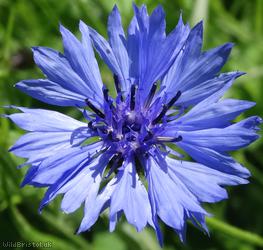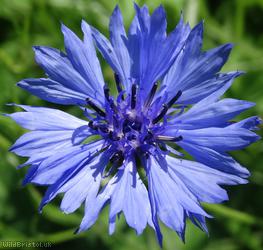Cornflower - Centaurea cyanus
Favourite Photos
Species Description
Rare as a relic but fairly frequently seen throughout the UK as an escape from cultivation and in modern meadow mixes. Habitat includes: disturbed places such as arable land, roadside verges, allotments, gardens, parks, churchyards, wasteland, tips etc. Flowers: June to August. Growing habit: Annual. Height: 40 - 90 cm. It has declined from 264 sites to just 3 sites in the last 50 years due to seed cleaning, herbicides, pesticides and more intensive farming practices. One plant can produce up to 800 seeds. Soil type: Light, sandy soil with a pH of 6.6 - 7.8. One plant / m^2 can cause a yield loss of up to 30 kg / ha (sounds a lot) or for every plant, 3g of yield is lost (not much). Value for wildlife: Various species of the orders Hymenoptera, Diptera. Cornflower has a sugar content of 34 % and one flower can produce up to 0.2 mg sugar / day. Has occurred in Britain since the Iron Age. (2n = 24). Other names include: Bluebottle, Bachelor's Buttons, Blue Bonnets, Brooms and Brushes, Corn-blinks, Ladder Love, Logger-heads, Miller's Delight, Pin-cushion, Witch Bells, Witch's Thimble, Blavers.





